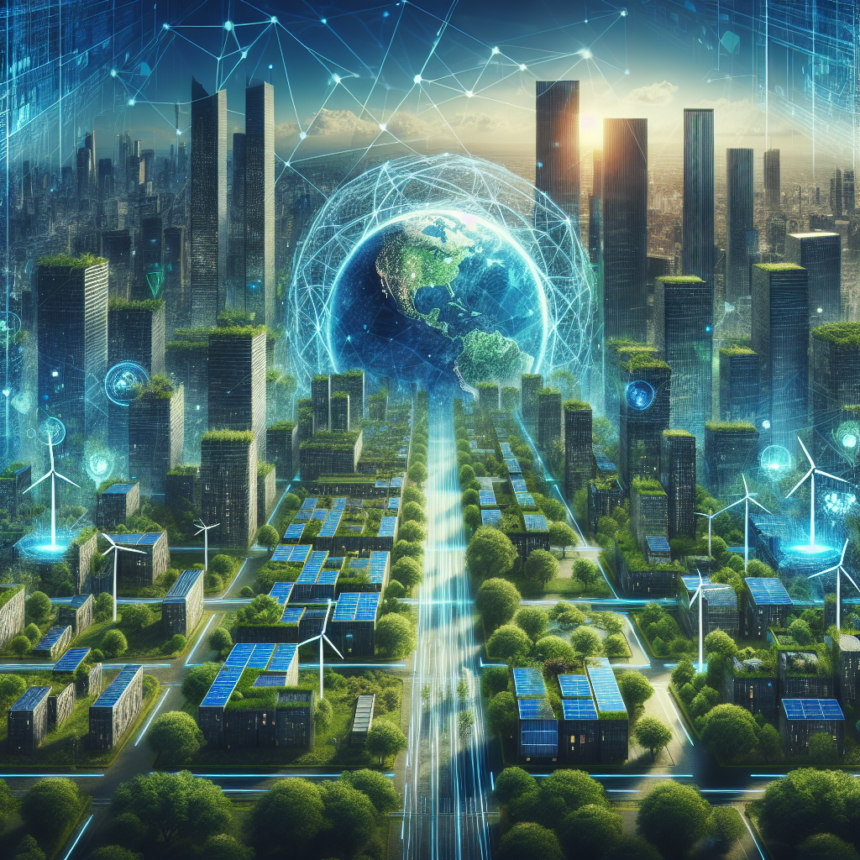Harnessing the Future: Top Sustainable Technology Trends Shaping Our World
As the world grapples with the pressing challenges of climate change, resource depletion, and environmental degradation, the quest for sustainable solutions is more urgent than ever. Fortunately, technology is at the forefront of this movement, harnessing innovation to create a more sustainable future. Let’s delve into the top sustainable technology trends that are significantly shaping our world.
1. Renewable Energy Technologies
The shift towards renewable energy is one of the most crucial trends in sustainable technology. Solar, wind, hydroelectric, and geothermal energy are taking center stage as alternative sources of power. Innovations such as next-generation solar panels, improved wind turbines, and energy storage solutions are making these energy sources more efficient and accessible. Countries worldwide are investing heavily in renewable infrastructure, creating jobs and reducing reliance on fossil fuels.
2. Smart Grids
Smart grid technology is revolutionizing energy distribution and consumption. By integrating digital technology into the electrical grid, smart grids facilitate better energy management, allowing consumers to monitor their usage and reduce waste. This technology not only improves reliability but also integrates renewable energy sources more effectively, contributing to a sustainable energy ecosystem.
3. Electric Vehicles (EVs)
The automotive industry is undergoing a transformative shift with the rise of electric vehicles (EVs). As battery technology advances, EVs are becoming more affordable, with longer ranges and faster charging times. Governments are also incentivizing EV adoption through subsidies, tax breaks, and infrastructure investments, supporting a more sustainable transport system. With a significant reduction in greenhouse gas emissions compared to traditional vehicles, EVs represent a critical step towards a cleaner future.
4. Circular Economy
The concept of a circular economy is gaining traction as a sustainable alternative to the traditional linear economic model. By emphasizing the recycling and refurbishing of products, businesses are minimizing waste and preserving resources. Innovative startups are leading the charge, developing technologies that facilitate the lifecycle management of products. This trend not only benefits the environment but also opens new avenues for economic growth.
5. Sustainable Agriculture and Food Technology
With a rising global population, sustainable agriculture is vital for ensuring food security. Technologies such as vertical farming, aquaponics, and precision agriculture are optimizing resource use while minimizing environmental impact. These methods utilize less land and water while enhancing crop yields. Additionally, advancements in biotechnology are leading to the development of genetically modified organisms (GMOs) that are more resilient and require fewer inputs, offering promise for sustainable food production.
6. Carbon Capture and Storage (CCS)
As the urgency to address climate change grows, carbon capture and storage (CCS) technologies are emerging as essential tools. CCS involves capturing carbon dioxide emissions from industrial sources and storing it underground to prevent its release into the atmosphere. Advances in these technologies are making it possible to reduce emissions significantly, helping industries like cement and steel to operate more sustainably.
7. Sustainable Building Technologies
The construction industry is embracing sustainable building practices to reduce its significant carbon footprint. Green architecture incorporates energy-efficient materials, smart technology, and renewable energy sources. Innovations like prefabricated construction and biophilic design, which connects buildings with nature, are leading to more efficient and sustainable living spaces. This trend is crucial for building the cities of the future.
8. Water Conservation Technologies
Water scarcity is a pressing global issue, prompting the need for sustainable water management technologies. Innovations such as smart irrigation systems, rainwater harvesting, and water purification technologies are optimizing water usage across sectors. These advancements not only help save water but also promote sustainability in agriculture and urban development.
Conclusion
As we look ahead, the intersection of sustainability and technology presents immense opportunities for innovation and growth. By harnessing these trends, we can create a future that respects and nurtures the planet. Everyone, from governments to individuals, has a role to play in this transformation, fostering a cycle of sustainability that benefits both people and the planet.
FAQs
Q1: What are sustainable technologies?
A1: Sustainable technologies refer to innovations that use resources efficiently and minimize environmental impact, promoting economic growth while preserving the planet’s ecosystems.
Q2: How can individuals support sustainable technologies?
A2: Individuals can support sustainable technologies by adopting energy-efficient appliances, using public transport, reducing waste, and advocating for policies that promote renewable energy and sustainable practices.
Q3: What are the benefits of a circular economy?
A3: The circular economy offers benefits such as reducing waste, conserving resources, creating jobs, and driving innovation, leading to sustainable economic growth.
Q4: What role do governments play in promoting sustainable technology?
A4: Governments can incentivize sustainable technology through regulations, subsidies, grants, and investment in research and development, fostering an environment that encourages innovation in sustainability.
Q5: Why is sustainable agriculture important?
A5: Sustainable agriculture is vital for ensuring food security, preserving biodiversity, and reducing the environmental effects of farming practices, thus contributing to global sustainability efforts.











